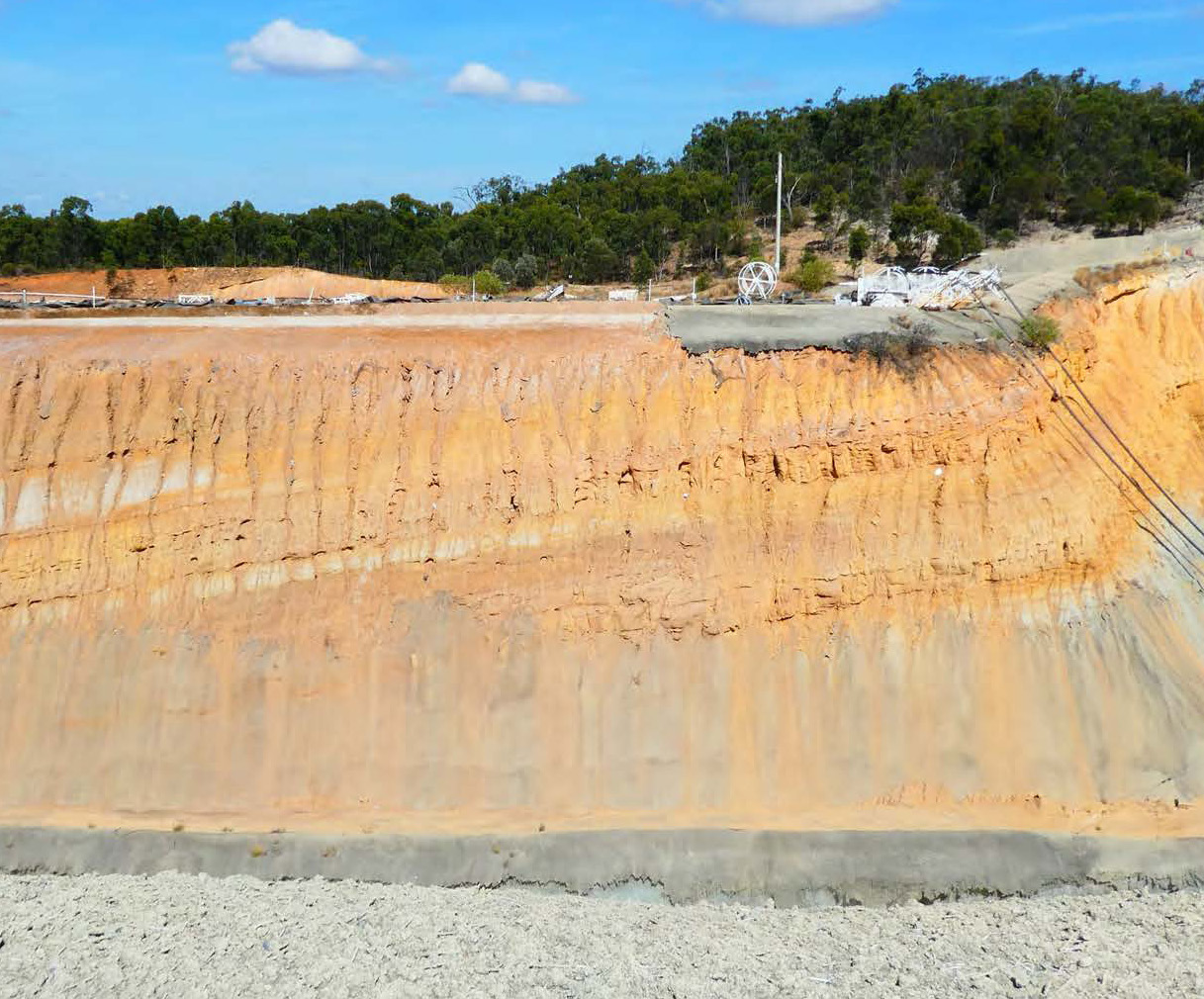Background
SGME’s team of scientists and engineers were engaged for their expertise in stabilising landforms, to investigate stabilisation techniques for a trial box-cut void above an underground coal mine. The mine is located in Central Queensland’s Bowen Basin approximately 20 kilometres east of Moranbah and 150 kilometres south-west of Mackay. It operates as an underground coal mine producing pulverised coal injection (PCI) and hard coking coal.
Objective
The mine operator required in-depth analysis of box-cut stabilisation options available to satisfy the information requirements of the progressive rehabilitation and closure plan guideline. A critical aspect of this analysis was to assess long-term stability to ensure it met all regulatory and environmental standards.
The final box-cut void is projected to be 660 metres (m) in length, 230 m in width and 75 m in depth with a footprint of ~7.51 hectares. The upper slope batters are 30 m long with a slope angle of 85 percent (%), and the re-battered area above the upper slopes is 10-15 m wide.
The primary objective of the project was to ensure that the box-cut void was considered ‘stable’ under the Environmental Protection Act 1994. Land is deemed stable if it is safe and structurally sound, it avoids environmental harm and can support a designated post-mining land use. This definition imposed stringent requirements on the mine’s rehabilitation process and necessitated thorough investigation, analysis and strategic planning to achieve compliance.
Solution
SGME applied a structured framework and approached the project by first conducting a desktop review of proven surface stabilisation techniques, considering factors such as suitability for box-cut slopes, risk, practicality of implementation, longevity of treatment and cost. Based on the review and findings, SGME was able to eliminate options and identify a shortlist of suitable stabilisation techniques.
We developed a trial methodology tailored to the unique characteristics of the box-cut void and applied the suitable techniques identified during the desktop review process. By customising the trial methodology to the site’s specific needs and challenges, SGME ensured that the proposed solutions were practical and effective in satisfying Government requirements. Importantly, the long-term stability of the box-cut void allowed the rehabilitated land to sustain a viable post-mining land use which is essential for mine closure.
Overall, SGME’s approach considered both technical aspects of surface stabilisation and practicality of implementation resulting in a robust solution for addressing the long-term stability of the box-cut void.
Applying our research, our experience and industry best practices enables SGME to play a significant role in solving complex challenges in the mining industry. This underscores our unwavering environmental stewardship and dedication to sustainable practices, and our goal of creating enduring value for the future.
